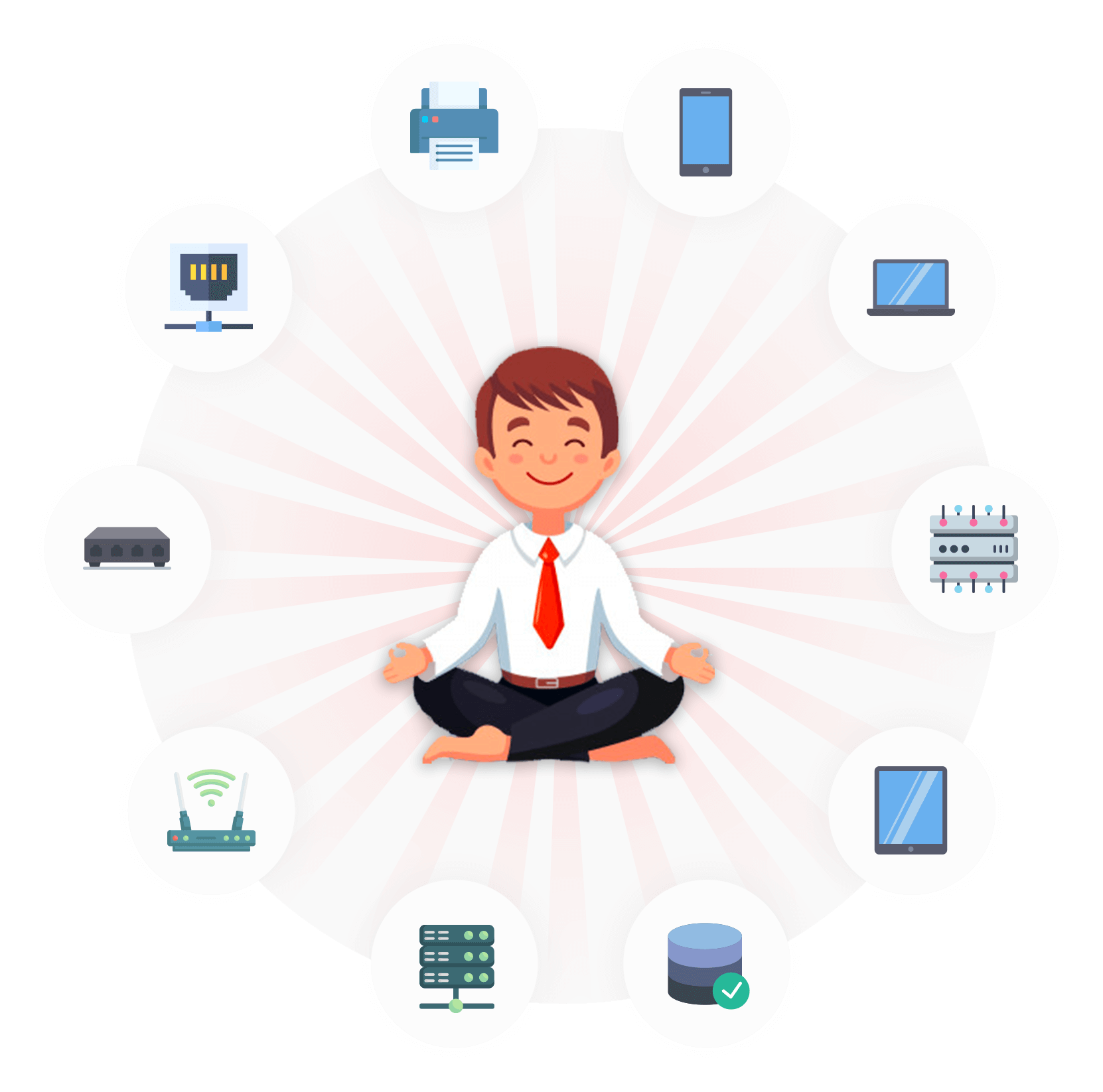Quick glance of IT asset management features in Endpoint Central MSP:
Our IT asset management feature offers a bird's-eye view and up-to-date data on all your IT assets, be they hardware or software. You can generate reports in an instant, such as a list of all the devices running Windows 10, or all the devices that have specific hardware (e.g. a monitor, HDD, or RAM).
Organizations can end up paying hefty fines if they get caught using commercial applications without proper licenses. IT asset management software helps you keep track of all your commercial and non-commercial applications, along with their corresponding licenses, so you can seamlessly manage licenses and avoid any violations.
IT asset management software can help you track the usage of specific applications and ascertain whether your employees are spending too much time on non-work related applications.
Track whether prohibited software is being used in your network. Automatically uninstall prohibited applications from computers or completely block the ability to launch such executables. Blacklist and whitelist applications according to the needs of your organizations and keep your network safe.
You can set alerts for every IT asset-related issue. Adding or removing new hardware or software? Running out of warranty? License about to expire? Set up automated alerts for all these issues to give yourself some breathing room.
IT asset management gives you a complete understanding of IT assets and their capabilities. Get granular details on maintenance requirements, life cycles, and more to tackle issues swiftly and improve operational efficiency.
There are several types of IT assets which an organization uses. Here are the two major types of IT assets:
Devices such as laptops, desktops, servers, mobile devices, printers, usually fall under the hardware category of the IT assets.
Licenses of commercial applications (Adobe, Microsoft Office suite, etc.), corporate applications meant to be used only for employees, corporate data in company owned devices, operating system (Windows) licenses, etc. fall under the software category.
IT asset management is sometimes referred to as IT inventory management because it involves gathering detailed hardware and software inventory information which is then used to make business (ops) related decisions. ITAM is more than just gathering up-to-date IT asset data. It additionally includes customizing the captured data according to the needs of the organization, monitoring parameters (tracking of cracked commercial applications, warranties, licenses etc.), reporting, and using all such data to minimize risk, maximize returns, and improve security.

If you are looking for a unified solution for network monitoring and endpoint management, try RMM Central today!
Free, 30-day trial